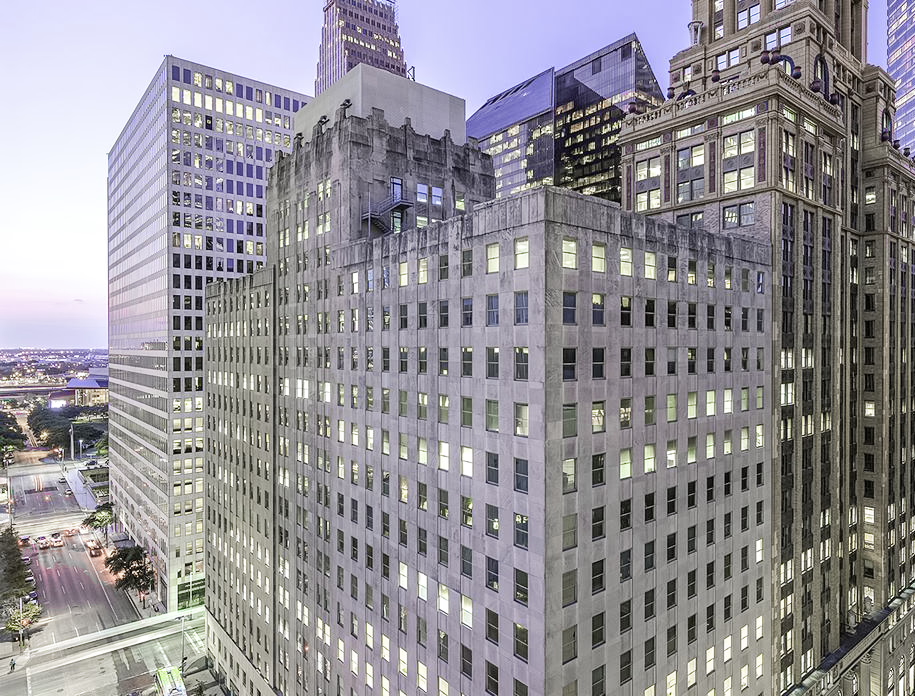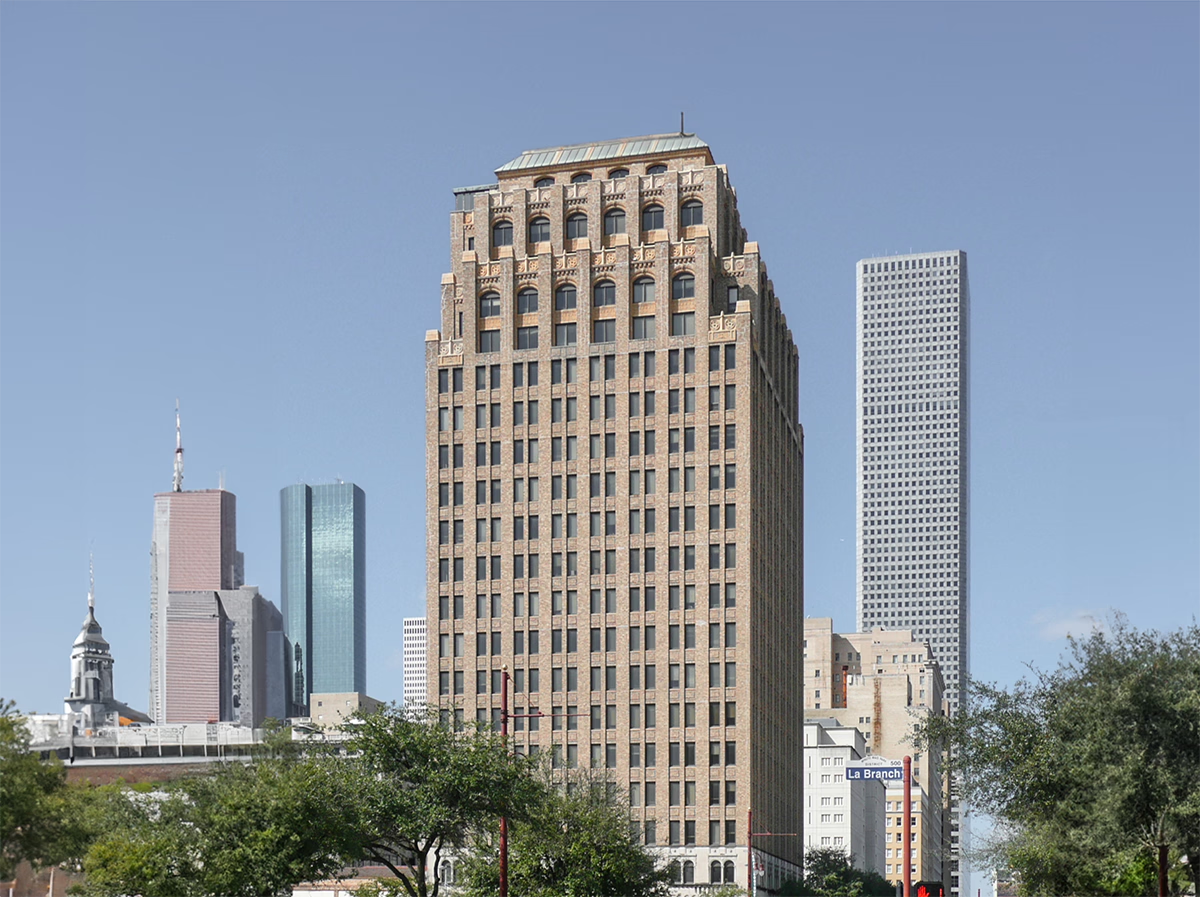Mellie Esperson Building vs Great Southwest Building


Comparing the Mellie Esperson Building and the Great Southwest Building is interesting because they both rise in Houston, TX, yet they were conceived by two different design teams, John Eberson and Alfred Bossm, and were completed at different points in time. They were finished more than a decade apart.
This contrast within the same city allows us to see how different creative minds interpreted the evolving needs of Houston across time.
Let's take a closer look!
Height & Size
The Great Southwest Building is clearly the larger tower of the two, both in terms of height and number of floors. It rises to 292ft (89m) with 21 floors above ground, while the Mellie Esperson Building reaches 272ft (83m) with 19 floors above ground.
Of course, each project may have faced different briefs or regulatory constraints, which we don't really know about and could also explain the outcome.
Architectural Style
Both the Mellie Esperson Building and the Great Southwest Building were designed in line with the aesthetic conventions of the Art Deco style.
The Mellie Esperson Building was designed at a moment when the Art Deco style was already in decline, making it more of a lingering expression of the movement. In contrast, the Great Southwest Building style was already in decline, making it more of a lingering expression of the movement. In contrast, the Great Southwest Building was built when the style still carried greater cultural weight.
Uses
The Mellie Esperson Building is primarily commercial, while the Great Southwest Building is primarily hotel.
Originally, the Great Southwest Building was designed for commercial, but over time it was converted to hotel. The Mellie Esperson Building by contrast has maintained its original role.
The Great Southwest Building incorporates a 4-star hotel with 226 rooms.
Structure & Facade
Both the Mellie Esperson Building and the Great Southwest Building rely on a Frame structural system.
A frame structure uses a grid of columns and beams to carry the building's loads. This frees the walls from structural duties, allowing for flexible floor plans and larger windows.
They also employ the same type of facade, a Masonry facade.
A masonry facade gives the building a heavier, more traditional appearance. It often conceals a frame structure behind it, creating the look of solid walls without carrying the main loads.
| Mellie Esperson Building | Great Southwest Building | |
|---|---|---|
| John Eberson | Architect | Alfred Bossm |
| 1939 | Construction Started | 1926 |
| 1941 | Year Completed | 1927 |
| Art Deco | Architectural Style | Art Deco |
| Commercial | Current Use | Hotel |
| 19 | Floors Above Ground | 21 |
| 83 m | Height (m) | 89 m |
| Frame | Structure Type | Frame |
| Steel | Vertical Structure Material | Steel |
| Concrete | Horizontal Structure Material | Concrete |
| No | Facade Structural? | No |
| TX | State | TX |
| Houston | City | Houston |
| 815 Walker Street | Address | 1314 Texas Avenue |